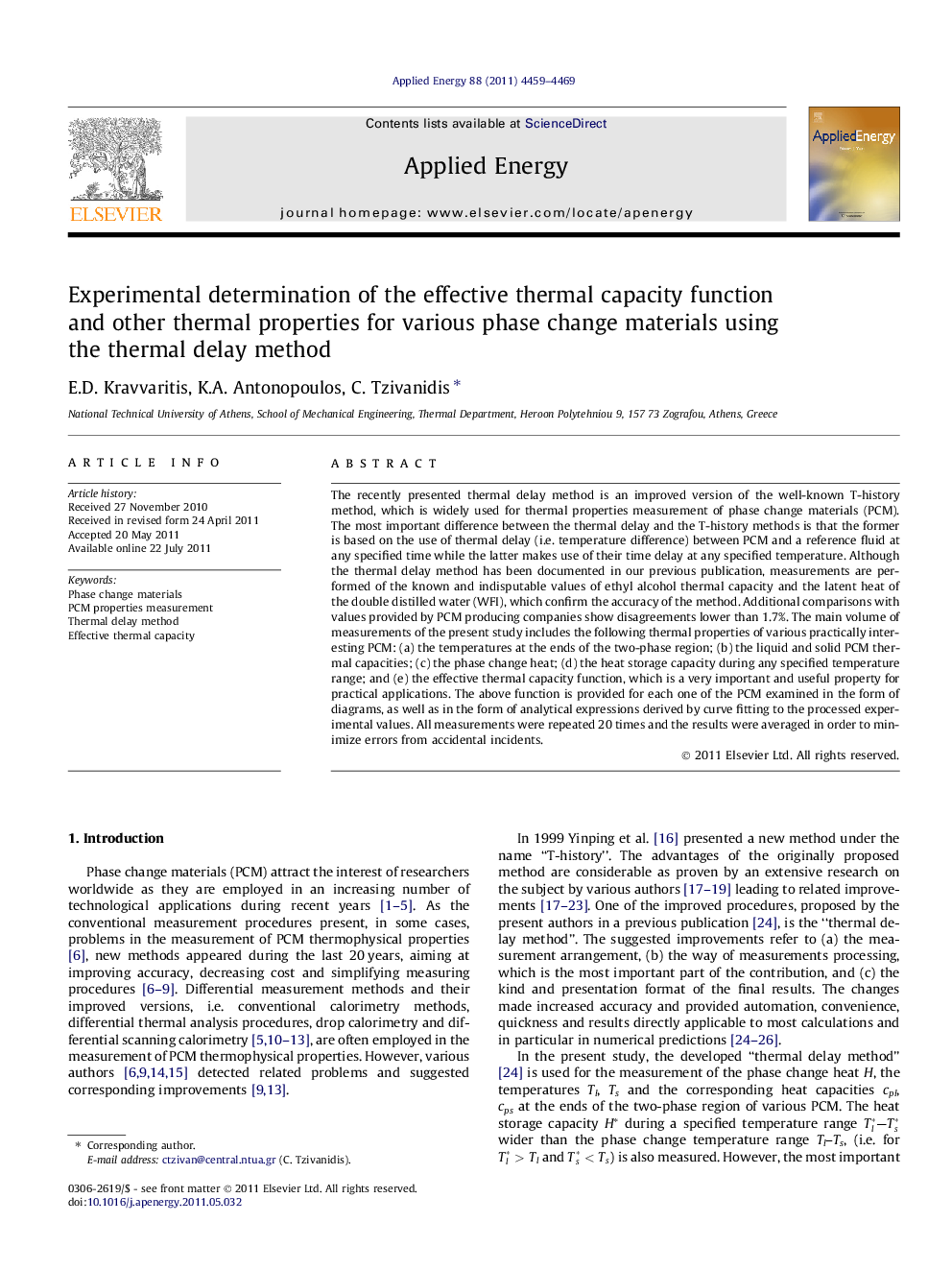| Article ID | Journal | Published Year | Pages | File Type |
|---|---|---|---|---|
| 243966 | Applied Energy | 2011 | 11 Pages |
The recently presented thermal delay method is an improved version of the well-known T-history method, which is widely used for thermal properties measurement of phase change materials (PCM). The most important difference between the thermal delay and the T-history methods is that the former is based on the use of thermal delay (i.e. temperature difference) between PCM and a reference fluid at any specified time while the latter makes use of their time delay at any specified temperature. Although the thermal delay method has been documented in our previous publication, measurements are performed of the known and indisputable values of ethyl alcohol thermal capacity and the latent heat of the double distilled water (WFI), which confirm the accuracy of the method. Additional comparisons with values provided by PCM producing companies show disagreements lower than 1.7%. The main volume of measurements of the present study includes the following thermal properties of various practically interesting PCM: (a) the temperatures at the ends of the two-phase region; (b) the liquid and solid PCM thermal capacities; (c) the phase change heat; (d) the heat storage capacity during any specified temperature range; and (e) the effective thermal capacity function, which is a very important and useful property for practical applications. The above function is provided for each one of the PCM examined in the form of diagrams, as well as in the form of analytical expressions derived by curve fitting to the processed experimental values. All measurements were repeated 20 times and the results were averaged in order to minimize errors from accidental incidents.
► The Thermal Delay method is an improved version of the well-known T-history method. ► The most important contribution is the experimental estimation of the “Effective Thermal Capacity” function. ► The “effective thermal capacity” is provided in the form of diagrams and analytical expressions.
